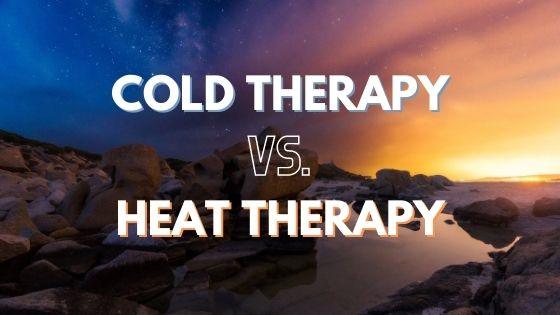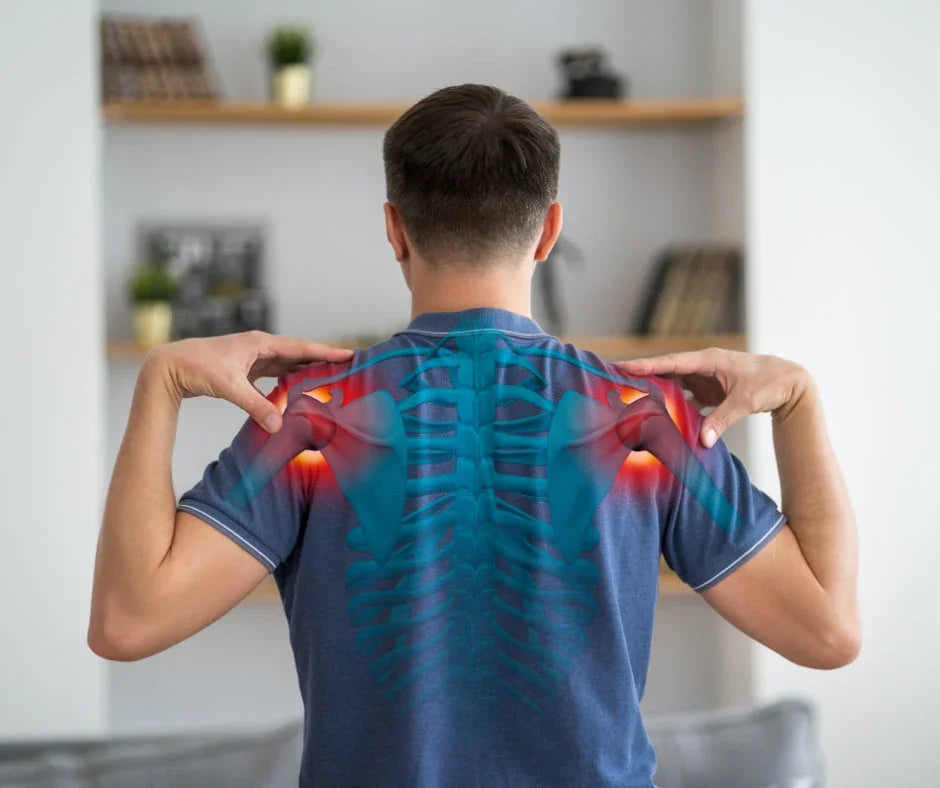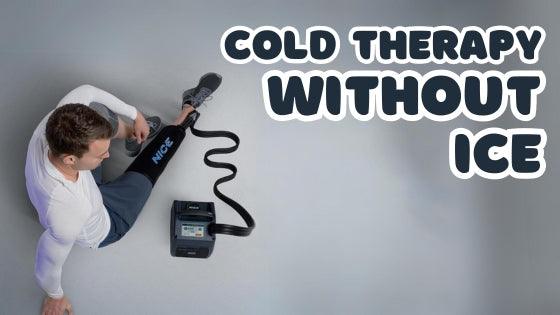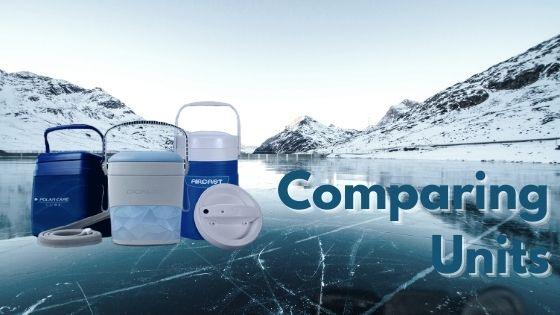Cold vs. Heat Therapy: When to Use Each for Injury Recovery

If you’re recovering from an injury or dealing with sore muscles, deciding whether to use cold therapy, heat therapy, or both can feel confusing. Applying the right treatment at the right time is key to reducing pain, speeding recovery, and preventing further damage. In this guide, we’ll break down when to use cold therapy, when to use heat, and how to combine them effectively for optimal results.
Here are the basics to get started:
-
Cold therapy is best immediately after an acute injury. It helps reduce inflammation, swelling, and pain.
-
Heat therapy is ideal for relaxing tight or stiff muscles and soothing chronic aches or lingering soreness.
Understanding these simple principles can help you tailor your treatment plan and recover safely, whether you’re rehabbing after surgery, a sports injury, or everyday muscle strain.
Cold vs. Heat Therapy: When to Use Each for Injury Recovery
Recovering from an injury or dealing with sore muscles often raises a common question: should you use cold therapy, heat therapy, or both? Applying the right treatment at the right time is crucial for reducing pain, minimizing inflammation, and promoting faster healing. In this guide, we’ll break down the best practices for cold and heat therapy, including timing, duration, and precautions to help you recover safely.
Understanding Cold Therapy
Cold therapy, also called cryotherapy, involves applying cold to an injured area to reduce inflammation, swelling, and pain. It’s particularly effective during the early stages of an acute injury, such as:
-
Sprains and strains
-
Muscle tears
-
Post-surgical swelling
-
Bruises or contusions
How it works: Cold therapy constricts blood vessels, which limits blood flow to the affected area. This helps reduce swelling and numbs nerve endings, providing pain relief.
Tips for using cold therapy:
-
Apply as soon as possible after injury (ideally within the first 24–48 hours).
-
Use for 10–20 minutes per session, several times a day.
-
Always place a barrier like a towel or cloth between the cold source and your skin to prevent frostbite or irritation.
-
Avoid using cold therapy over open wounds.
Common cold therapy tools: Ice packs, gel packs, and cold therapy machines like the Aircast Cryo/Cuff system are excellent options for targeted pain relief.
Understanding Heat Therapy
Heat therapy, or thermotherapy, is designed to relax muscles, improve blood flow, and alleviate stiffness or chronic pain. Heat is typically used for:
-
Muscle tightness or spasms
-
Chronic joint pain (arthritis, tendonitis)
-
Lingering stiffness after the initial swelling has gone down
-
Promoting flexibility before stretching or physical therapy
How it works: Applying heat dilates blood vessels, which increases circulation to the area. This brings oxygen and nutrients to muscles and joints, helping tissue heal and relieving tension.
Tips for using heat therapy:
-
Apply heat for 15–20 minutes at a time, several times per day.
-
Use heating pads, warm towels, or hot packs.
-
Avoid heat immediately after an acute injury, as it may increase swelling.
-
Ensure the heat source is warm but not too hot to prevent burns.
When to Use Both: Contrast Therapy
In some cases, alternating cold and heat—called contrast therapy—can provide additional benefits:
-
Use cold therapy first to reduce acute inflammation, followed by heat to relax muscles.
-
Alternating therapies can improve circulation, reduce stiffness, and promote faster recovery.
-
This approach is often recommended for chronic injuries, post-workout soreness, or rehabilitation programs.
Example schedule:
-
Apply cold therapy for 10 minutes.
-
Switch to heat for 10–15 minutes.
-
Repeat 1–2 times as tolerated.
Always consult your healthcare provider before starting contrast therapy, especially after surgery or serious injury.
Safety Precautions
Regardless of whether you choose cold, heat, or contrast therapy, following safety guidelines is essential:
-
Monitor your skin: Check for redness, burns, numbness, or irritation.
-
Use barriers: Protect skin from direct ice or overly hot sources.
-
Limit duration: Avoid prolonged sessions to prevent tissue damage.
-
Avoid if you have certain conditions: People with diabetes, circulation issues, or neuropathy should consult their doctor first.
-
Listen to your body: Stop therapy if you experience excessive pain, tingling, or skin changes.
Tips for Maximizing Recovery
-
Combine therapy with gentle movement or physical therapy exercises to prevent stiffness.
-
Maintain good posture and proper ergonomics to reduce strain.
-
Stay hydrated and rest when needed to support overall healing.
-
Follow your healthcare provider’s guidance for optimal recovery.
Conclusion
Knowing when to use cold therapy, heat therapy, or both can significantly impact your recovery time and comfort. Cold therapy is best immediately after acute injuries to reduce swelling and numb pain, while heat therapy is ideal for relaxing tight muscles and managing chronic aches. For some patients, alternating between the two can further enhance circulation and healing.
By using these therapies safely and effectively, you can support faster recovery, reduce pain, and regain mobility. For targeted shoulder or joint support, explore professional-grade devices like the Aircast Cryo/Cuff to make your cold therapy sessions more efficient and comfortable.
More
Cold Therapy

What Type of Cold Therapy Should I Use?
There are many different options when it comes to administering cold therapy treatments, from ice packs, to cold packs to even more advanced cold therapy machines with and without compression features.
- Bag of Ice - A simple solution when you have nothing else on hand. Just be sure not to apply ice directly to your skin. Instead, try wrapping it in a wash cloth, towel, or t-shirt.
- Cold Packs - Cold packs are a great and inexpensive solution for relieving aches and pains caused by minor, acute injuries such as bruises and minor sprains. These are more beneficial than ice in a bag since they are generally designed not to freeze completely which allows them to better form around your body for more targeted, comfortable treatment.
- Cold Therapy Machines - cold therapy units are ideal for more serious injuries or following surgeries to help prevent swelling and reduce overall healing time. There are motorized and non motorized options available that can provide up to 10 hours of cold therapy, depending on the unit. These are ideal for use after surgeries such as joint replacements.
- Cold Therapy Machines with Compression - these cold therapy units provide the same wonderful benefits as typical cold therapy units, but with an added compression component which provides intermittent compression along with cold therapy. These units are ideal for post-op joint recovery and more serious sports related injuries to provide optimal control of swelling to minimize pain and reduce the risk of hemarthrosis or edema. If you have been advised to follow the RICE (rest, ice, compression, and elevation) treatment plan by your doctor, this is a great option for you.
Heat Therapy

What Types of Heat Therapy Should I Use?
- Take a Warm Bath - warm baths are free and especially helpful for all over aches and pains, however they do not allow targeted treatment so a specific area.
- Electrical Heating Pad - while these are effective at applying heat therapy to a targeted area, they require access to electricity and can be a bit of a safety hazard.
- Heat Wraps - heat wraps are a great for providing targeted heat therapy to relieve sore muscles, or chronic aches and pains. Additionally, many wraps on the market are capable of providing both cold and hot therapy, such as ActiveWraps. These wraps are moldable in order to contour to your body to provide targeted, effective relief heat to the injured area.







Leave a comment